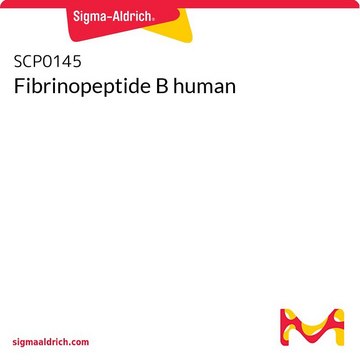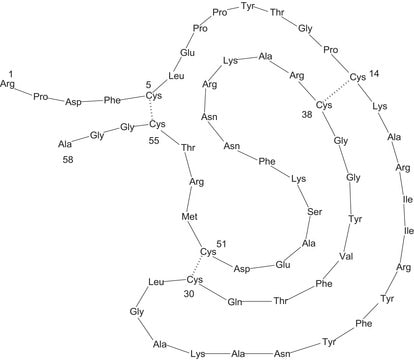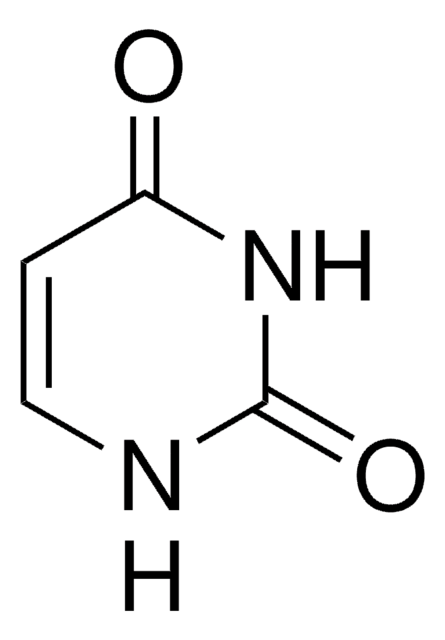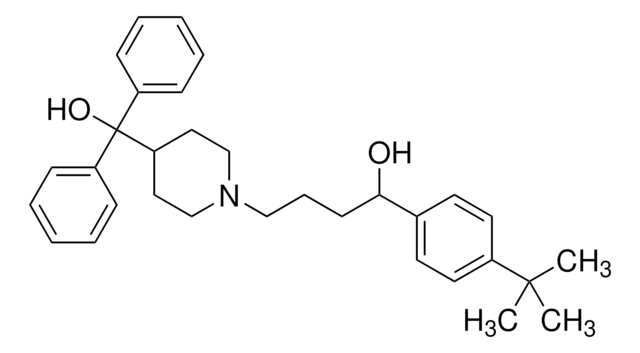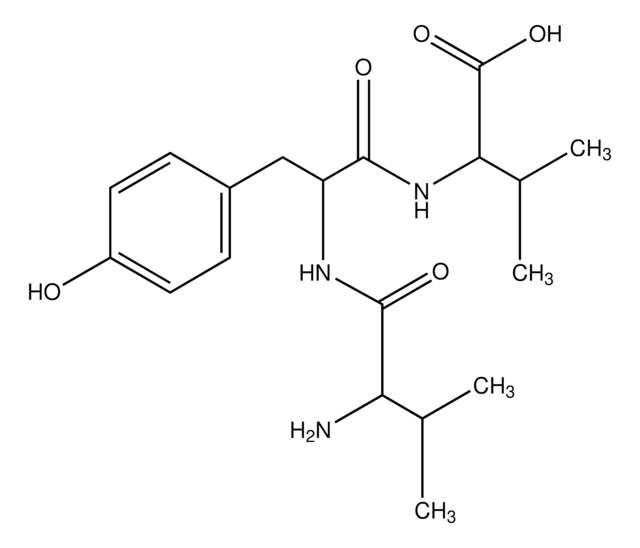SML0220
YM 022
≥98% (HPLC)
Synonym(s):
N-[(3R)-2,3-Dihydro-1-[2-(2-methylphenyl)-2-oxoethyl]-2-oxo-5-phenyl-1H-1,4-benzodiazepin-3-yl]-N′-(3-methylphenyl)-urea
About This Item
Recommended Products
Quality Level
Assay
≥98% (HPLC)
form
powder
optical activity
[α]/D -128 to -140 (c = 1, DCM)
color
white to beige
solubility
DMSO: 5 mg/mL (clear solution)
storage temp.
room temp
SMILES string
Cc1cccc(NC(=O)N[C@@H]2N=C(c3ccccc3)c4ccccc4N(CC(=O)c5ccccc5C)C2=O)c1
InChI
1S/C32H28N4O3/c1-21-11-10-15-24(19-21)33-32(39)35-30-31(38)36(20-28(37)25-16-7-6-12-22(25)2)27-18-9-8-17-26(27)29(34-30)23-13-4-3-5-14-23/h3-19,30H,20H2,1-2H3,(H2,33,35,39)/t30-/m0/s1
InChI key
YCXFHPUBGMMWJQ-PMERELPUSA-N
Biochem/physiol Actions
Features and Benefits
Signal Word
Danger
Hazard Statements
Precautionary Statements
Hazard Classifications
Acute Tox. 3 Oral
Storage Class Code
6.1C - Combustible acute toxic Cat.3 / toxic compounds or compounds which causing chronic effects
WGK
WGK 3
Flash Point(F)
Not applicable
Flash Point(C)
Not applicable
Choose from one of the most recent versions:
Certificates of Analysis (COA)
Don't see the Right Version?
If you require a particular version, you can look up a specific certificate by the Lot or Batch number.
Already Own This Product?
Find documentation for the products that you have recently purchased in the Document Library.
Our team of scientists has experience in all areas of research including Life Science, Material Science, Chemical Synthesis, Chromatography, Analytical and many others.
Contact Technical Service